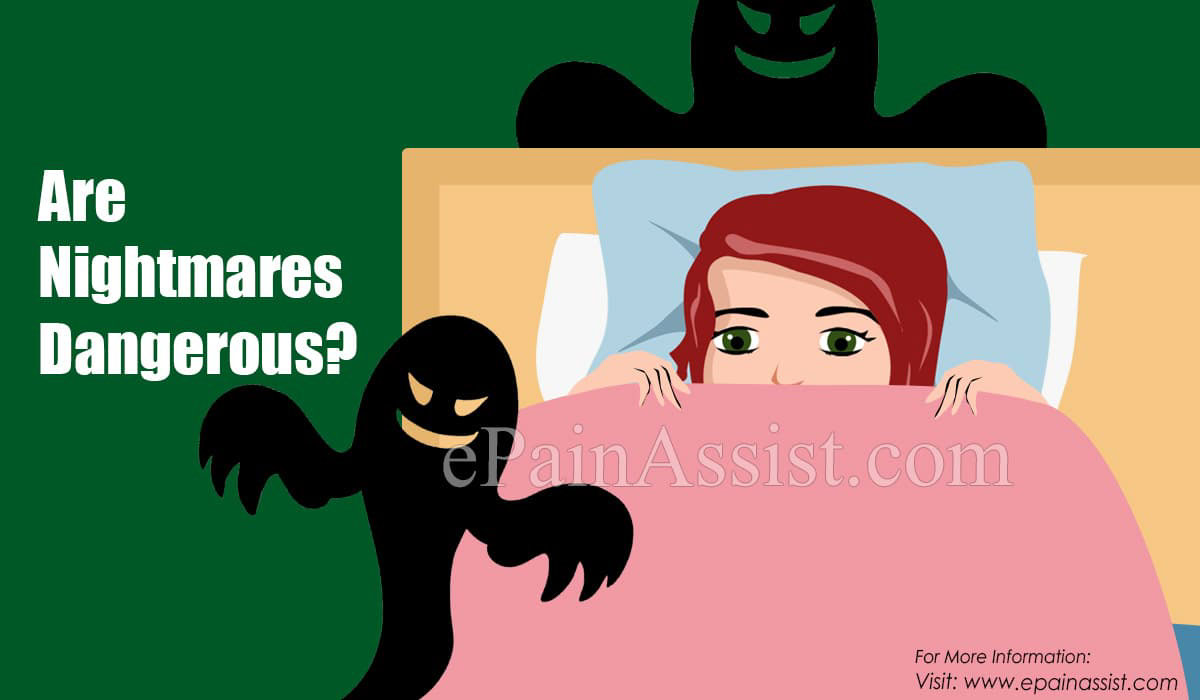Are Nightmares Dangerous?
Nightmares can be frightening, fearful; panicking in the dreams but the course of this disorder is not dangerous in most of the cases. Almost all cases resolve automatically with age and only few cases require medical treatment for it. Reassurance and conservative management is the only treatment required in sporadic and occasional cases. The events seen or felt during the nightmare can be recalled and easily described. The response after awakening from the bad dream is not dangerous and the patient is alert and stressed.

But when comparing to night terrors, the response seen is different, severe and dangerous also. The patient is absolutely terrified and can attack the fellow sleeping persons because of being under the impression of life-threatening position in the dream. These individuals may cause injury and can respond with abusive behavior if tried to be consoled.(1)
How Do You Know If You Have A Nightmare Disorder?
Nightmares are a common sleep disorder which can be easily diagnosed by the history and symptoms experienced by the individual. It is defined as recurrent awakening episodes from sleep with disturbing orientation due to dysphonia dreams. It has been described in sleep disorders in Diagnostic and Statistical Manual of Mental Disorders, fifth edition (DSM-5) along with its diagnostic criteria. There are five characteristics in the diagnostic criteria which may lead the diagnosis towards nightmare disorder.[1] These are as follows:-
- Multiple episodes of dysphonia dreams associated with continuous fight to avoid the threat of mental and physical disintegrate in the dream and cause awakening from the sleep.
- These are well remembered and can be recalled by the patient after awakening. The patient is overtly alert and sometimes fearful immediately after the awakening from a nightmare.
- The episodes of nightmares are significantly distressful to the patient and also affect his/ her social and occupational life.
- The symptoms and the episode recurrence cannot be usually explained by the effects of drug abuse or medical treatment.
- The patient is not suffering from other psychological or mental conditions like post-traumatic stress disorder, delirium, etc. which can cause nightmares.
After the diagnosis, classification of nightmare disorder is done on the basis of duration of symptoms and the severity of the disease. On basis of duration it can be divided into three parts; acute disorder (symptoms of less than one month), sub-acute (symptoms for the duration between 1 to 6 months) and chronic (symptoms lasting more than 6 months). The severity of the disorder is decided by the frequency of episodes and is divided into two three parts; mild (less than or equal to 1 episode per week), moderate (multiple episodes in a week) and severe (episodes occurring every night).
Since this order is very common in children, it is usually experienced by the parents with disturbance of sleep due to the awakening of child and other symptoms like weeping, fearful, stressed, etc. and then parent’s hypersomnolence could lead to indirect diagnosis of nightmare disorder in their children.(1)
Conclusion
Nightmares are commonly encountered symptoms in sleep disorders and are usually experienced in childhood. It is a self-limiting disorder which decreases with age and only one-third of the cases are carried forward in adolescence. Only a few cases remain till adulthood and most of the cases are cured. These are usually not dangerous because the dream is not very severely panicking and episode can be easily remembered and recalled.
The diagnosis of nightmare disorder is not very difficult and is usually diagnosed by any physician on the first appointment because it presents with a very characteristic history. Although the diagnostic criteria are described in the DSM 5 classification of psychiatric disorders it is largely dependent upon the physician’s assumption, practical knowledge and subjective description of the episode by the patient. Usually there is no need for medical treatment in most of the cases and only reassurance and conservative treatment is sufficient.
Also Read:
